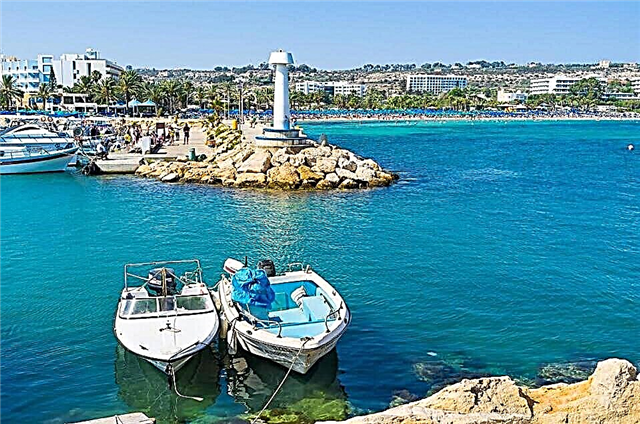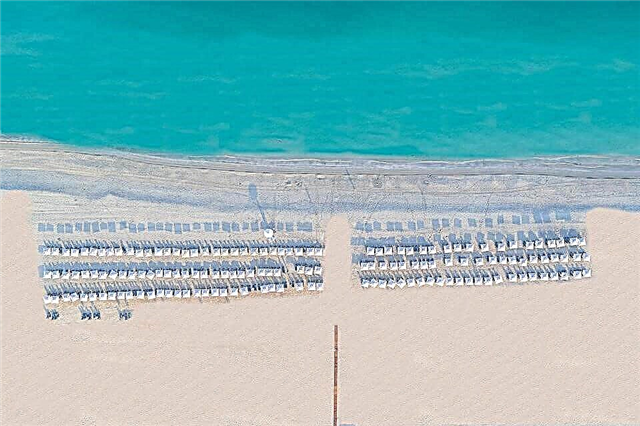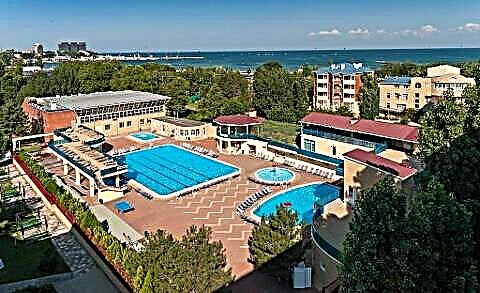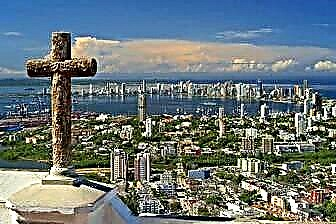Address: Estonia, Tallinn, Toompea hill
Foundation date: XIII century
Coordinates: 59 ° 26'07.8 "N 24 ° 44'14.6" E
Content:
Short description
For centuries, Toompea Castle, which rises menacingly on a hill over a 50-meter cliff, has been a symbol of the ruling power in Estonia.

Toompea Castle and Long Hermann Tower from a bird's eye view
It was here, at the foot of the hill, that the city of Tallinn was born about 1000 years ago. According to the Estonian epic, Toompea Hill is a giant tombstone on the grave of the legendary giant Kalev, who founded one of the first principalities on the territory of present-day Estonia.
The wife of the hero Linda, mourning the death of her husband, brought huge boulders to the place of his burial. A hill was formed from boulders, and Lake Ülemiste emerged from Linda's tears. By the beginning of the 12th century, the settlement on Toompea Hill had turned into a fortified settlement, surrounded by walls with towers at the corners. In the summer of 1219, Danish troops led by Valdemar II captured the city on the Toompea hill and immediately set about building a stone castle.

General view of the castle
As a result of the development, two fortresses appeared on the hill, separated by an inner wall - Big and Small. A large fortress, occupying the northern part of the hill, served as the seat of the Tallinn bishop and feudal lords. Toompea Castle was built as a Small Fortress for additional protection of the Upper City... From the north and east, the Small Castle was separated from the outside world by a deep moat with drawbridges, and from the west by a natural precipice. Danish rule did not last long, and already in 1227 the power in Estonia was seized by the Order of the Knights of the Sword, created in Riga in 1202 with the aim of conquering the Baltic States. In 1238 the city-fortress on the Toompea hill again passed to the Danes. During the restructuring in the south-western corner of the Small Fortress, a palace was erected for the governor of Denmark, and the rest of the lands on Toompea were built up with houses of Danish feudal lords.

View of the castle from Tooma Boulevard
The Danes reigned here for more than 100 years, but in 1346 they sold their Estonian colony to the Grand Master of the Teutonic Knights, who soon handed it over to the Landmaster of the Teutonic Order in Livonia. A year later, the Teutons resold the land on the Toompea Hill to the Livonian Order, receiving 20 thousand silver marks for them. Under the Livonians, the outdated fortifications on Toompea were modernized.
The fortress was built on the model of the convent castle-monastery. Inside the former castle, four buildings standing at right angles formed a rectangular courtyard, connected to the outside world by a gate with a watchtower. In the center of the fortress was the House of the Convention, which housed the meeting room of the Order Chapter, living rooms for knights, a refectory and a chapel.

View of the castle from the Alexander Nevsky Cathedral
A dansker tower adjoined the castle, allowing shelling along the wall during an enemy assault. Strong walls and towers at the corners of the fortress provided reliable protection. From the beginning of the 16th century, Toompea Castle gradually loses its defensive significance and becomes a palace. After the collapse of the Livonian Order, the Swedish King Johan III erected a representative building of the State Hall near the Long Hermann Tower, but it has not survived to this day. Since the Great Northern War, when Tallinn was taken by the Russians, Toompea Castle fell into disrepair, and only in 1776 Empress Catherine II rebuilt it into a late Baroque palace. This palace was turned into the residence of the Governor-General of Estonia. Today, the Parliament of the Republic of Estonia sits within the walls of the medieval Toompea Castle..

Tower Long Hermann
Long Hermann Tower - Guardian of Toompea Castle
The merciless time changed a lot in the appearance of Toompea, but could not crush the tallest of the castle towers - "Long Hermann". Presumably, the tower is named after the hero of the German epic Lange Hermann, whose name means "Long Warrior" in German. Built in the 1360s, the Herman has stood guard over Tallinn like a soldier for centuries. In the 16th century, another 10 meters was added to the considerable growth of the tower. From a height of 45.6 meters, watchful guards watched the approach of the enemy from land and sea, and in the event of an attack, the tower served as the last refuge for the defenders of the castle. The barn was located on the first tier of the Long German. The upper tiers were occupied by heated living rooms and shooting rooms. On the basement floor, at a depth of 15 meters, there was a dungeon.

View of the southern facade of the castle
In this prison, prisoners were lowered through a small hole in the ceiling. According to legend, death sentences were carried out here - at the bottom of the mine, where the lions were kept, the convict was thrown, and the animals tore him to pieces. The prison received the nickname "Lion's Pit" among the people. A covered combat passage with observation slots led to the upper floors of the Long Herman tower. Moving from one tier to another could only be done by stairs. If the enemy managed to break through to the first floor, then the defenders of the fortress, having climbed up through the narrow door, took out the stairs, and the enemy could not advance further in the capture of the castle. Today, a staircase of 215 steps leads to the top of the modern "German".

View of the western facade of the castle
Every morning, simultaneously with the playing of the Estonian anthem, the national flag is raised over the Long Hermann tower, and in the evening it is lowered. In addition to "Herman", the northern and western fortress walls and two towers - Landskrone ("Crown of the Country") and Pilstiker ("Arrow Grinder") have survived from Toompea Castle to this day.











